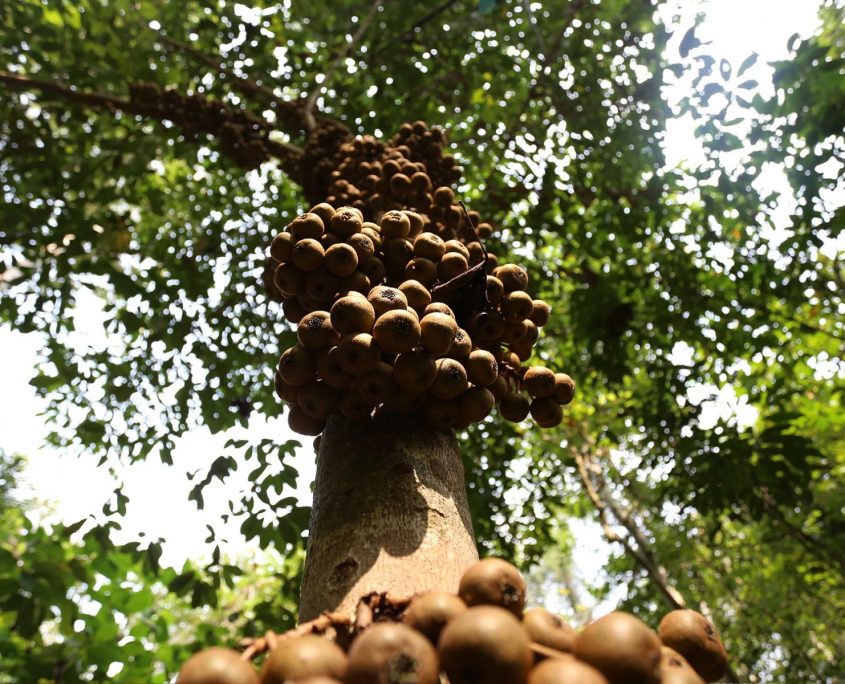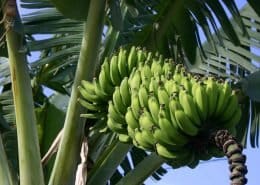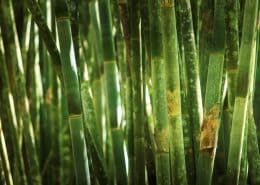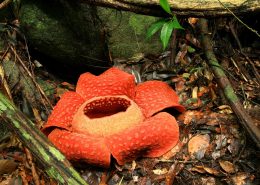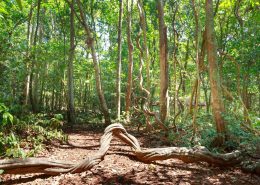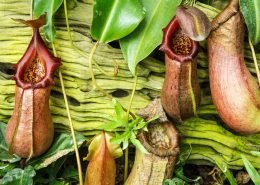Fig
Ficus
Description:
There are about 800 species of fig in the world, a majority of which can be found in the Indo Australian region. Although colloquially called ‘fig tree’, not all species are actually trees – some are vines or epiphytes instead. Figs are often considered key stone species, since they provide an important food resource for many animals and birds in the forest. The fig has a truly unique pollination process involving highly specialized wasps. These wasps bore into the center of the still green, unripe fruit of the fig tree, which are technically not fruits, but flowers. The wasps use the fruit as a place to lay and germinate their eggs facilitating pollination of the fig tree. Losing their wings when entering the fruit and being unable to leave the fruit after eggs have been laid means that the wasp will die inside the fruit. The eggs hatchwith half of them resulting in male wasps and the other half in female wasps. Eventually these wasps mate, the males drill a tunnel out of the fig and die so the females can leave the fig and fly to the next fig tree, starting the cycle all over again. The bodies of the dead wasps dissolve inside the fig resulting in protein. Yellow, red and orange ripe figs are one of the most important food sources in the rainforest. Hornbills, gibbons, deer, monkeys, tapirs, bears, and squirrels are only some of the species that feed on them.
Did you know...?
… that the oldest known living plant in the world is a fig tree? It is of the species Ficus religiosa, was planted in 288 BC in Sri Lanka, and is still surviving today!

